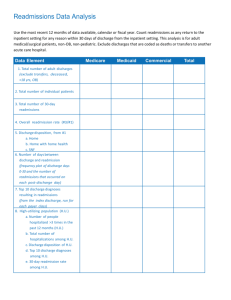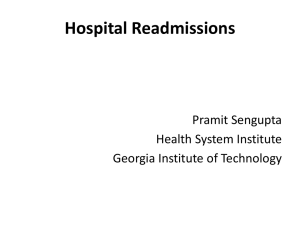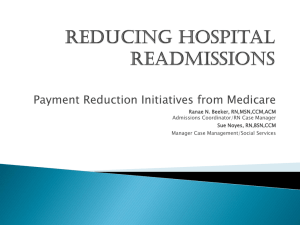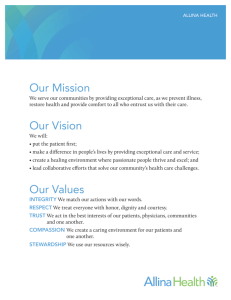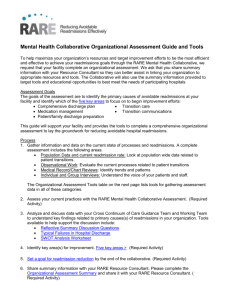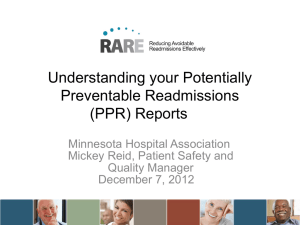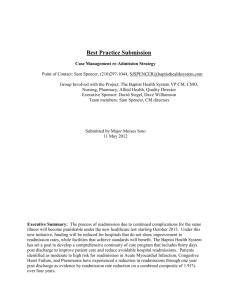Abstract Summary (38) - Healthcare Analytics Summit
advertisement
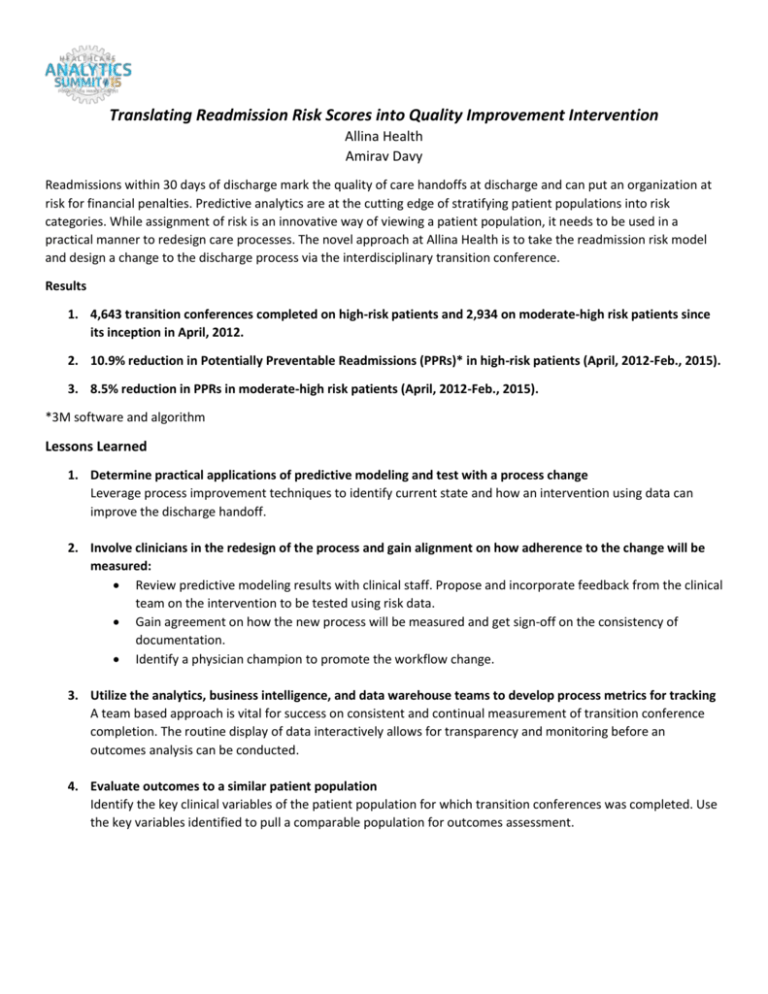
Translating Readmission Risk Scores into Quality Improvement Intervention Allina Health Amirav Davy Readmissions within 30 days of discharge mark the quality of care handoffs at discharge and can put an organization at risk for financial penalties. Predictive analytics are at the cutting edge of stratifying patient populations into risk categories. While assignment of risk is an innovative way of viewing a patient population, it needs to be used in a practical manner to redesign care processes. The novel approach at Allina Health is to take the readmission risk model and design a change to the discharge process via the interdisciplinary transition conference. Results 1. 4,643 transition conferences completed on high-risk patients and 2,934 on moderate-high risk patients since its inception in April, 2012. 2. 10.9% reduction in Potentially Preventable Readmissions (PPRs)* in high-risk patients (April, 2012-Feb., 2015). 3. 8.5% reduction in PPRs in moderate-high risk patients (April, 2012-Feb., 2015). *3M software and algorithm Lessons Learned 1. Determine practical applications of predictive modeling and test with a process change Leverage process improvement techniques to identify current state and how an intervention using data can improve the discharge handoff. 2. Involve clinicians in the redesign of the process and gain alignment on how adherence to the change will be measured: Review predictive modeling results with clinical staff. Propose and incorporate feedback from the clinical team on the intervention to be tested using risk data. Gain agreement on how the new process will be measured and get sign-off on the consistency of documentation. Identify a physician champion to promote the workflow change. 3. Utilize the analytics, business intelligence, and data warehouse teams to develop process metrics for tracking A team based approach is vital for success on consistent and continual measurement of transition conference completion. The routine display of data interactively allows for transparency and monitoring before an outcomes analysis can be conducted. 4. Evaluate outcomes to a similar patient population Identify the key clinical variables of the patient population for which transition conferences was completed. Use the key variables identified to pull a comparable population for outcomes assessment. 5. Identify barriers for implementation in a busy clinical setting Constant feedback from all clinicians involved (physicians, nurses, pharmacists, social workers, etc.) on difficulties conducting transition conferences from time constraints, competing resource demands, and determining appropriate handoffs for the outpatient setting.
